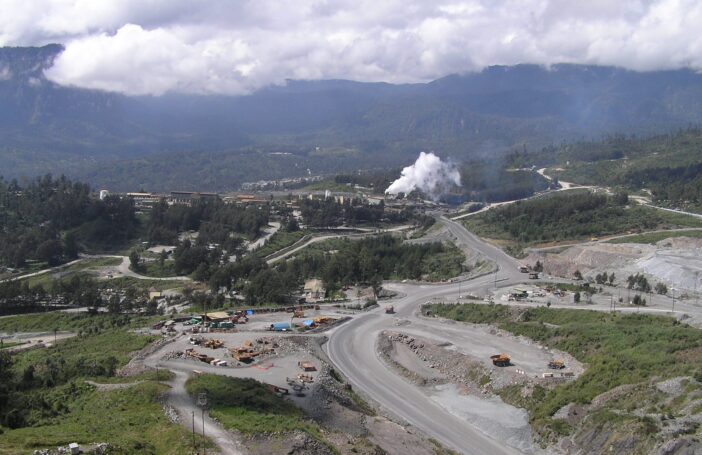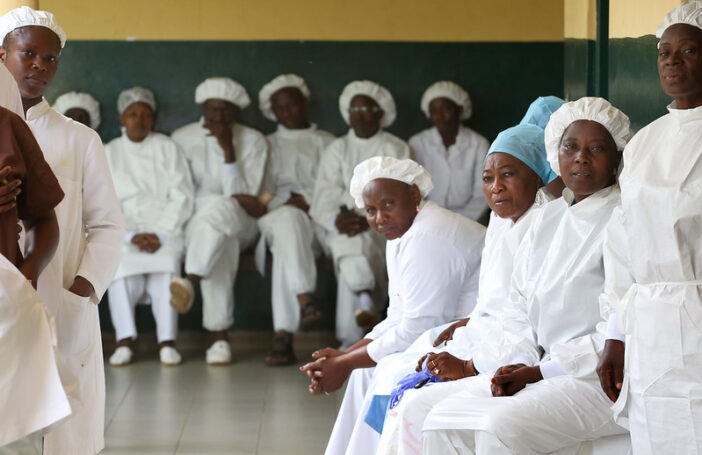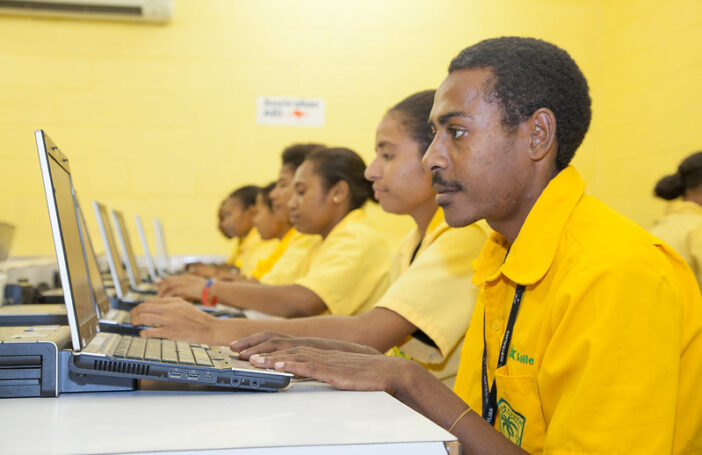An earlier version of this blog was published in The Conversation. After publication, the authors received valuable feedback which is incorporated into the revised version below.
There was so much money sloshing around in Bougainville during 2024 that the stores ran short of goods and people could be found partying until dawn.
The region’s economy has been buoyant thanks in part to good fortune – record high prices for cocoa – and a largely unknown aid success story. More than a decade ago, the World Bank, followed thereafter by various projects under the banners of the Australian and New Zealand governments, began to help Bougainville’s cocoa farmers rehabilitate their plantations, some of which had gone to seed since the region was embroiled in a civil war in the 1990s.
The projects have had various acronyms which run from the utilitarian to the cutesy “spell out an acronym into a signifying word” that seems de rigeur in aid investments these days. Generally speaking, the projects have all been variations on a theme: plant better quality seeds, improve the financial literacy of farming collectives and help farmers get their products to market. Sweet dividends are being reaped now. The questions now are: Will it last? Are donors learning the right lessons? And is the Autonomous Bougainville Government (ABG) capitalising on this financial windfall?
Bougainville’s cocoa story is more than 100 years old. The Germans planted cocoa trees during their 30-year colonial rule, and Australian planters and Bougainvillean farmers continued where they left off in the decades that followed. Bougainville’s 1989-1998 civil conflict devastated the cocoa industry. Cocoa production shrivelled during the crisis and the years that followed and with it the knowledge about production which had passed previously from generation to generation. Like elsewhere in PNG, the cocoa industry in Bougainville was also laid low by a pestilent worm, the cocoa pod borer.
Efforts to turn this around began in 2014 when the World Bank and the International Fund for Agricultural Development began the Productive Partnerships in Agriculture Project in partnership with the PNG Cocoa Board, implemented by World Vision. This was part of a US$100 million investment in cocoa and coffee in five of Papua New Guinea’s provinces and Bougainville. In Bougainville, this primarily took the form of distributing 200 new disease-resistant cocoa clones and basic tools to farmers, along with a comprehensive farm training program.
There is an element of “imitation is the sincerest form of flattery” in what happened next. The Australian and New Zealand governments began giving support to cocoa in 2016 as part of a wider program of Australian and New Zealand support called the Bougainville Partnership.
It was hardly a propitious time to launch an endeavour like this, as world cocoa prices were falling rapidly. And the launch was memorable, albeit in uncomfortable ways. Bougainville’s President John Momis gave a speech lauding the initiative as being useful for his region’s independence campaign which caused Australian and New Zealand representatives to shift awkwardly in their seats. This was most assuredly not what Canberra and Wellington wanted to be associated with: both countries have policies of studious neutrality on the matter of Bougainville’s future.
As well as being an implementer, the Bougainville Partnership was also a grant manager. Through it, Australia and New Zealand supported a complementary project managed by the non-government organisation CARE that included a focus on supporting women in cocoa production. This component had the excellent acronym of BECOMES.
Australia also provided support through the Australian Centre for International Agricultural Research (ACIAR). This involved a number of features including an annual chocolate festival that helped put Bougainville’s products back on the map, a new laboratory to test the quality of cocoa beans, and other initiatives. Plants more resistant to borer were distributed. Farmers were given advice on pest management.
Rewards from these projects are being reaped. Weather-related diseases caused the West African cocoa crop to collapse, quintupling world prices and precipitating Bougainville’s unexpected economic boom. According to initial findings from a survey by the Australian Department of Foreign Affairs and Trade, 87% of grantees benefited from increased income. Cocoa output has also improved, with more beans being grown and produced through the new trees.
This, combined with the price boom, has left Bougainville’s cocoa farmers flush. It has the potential to be a real boon in this hardscrabble island chain still bearing the scars of conflict.
Given how hard it is to deliver aid effectively in PNG you would think more people outside of Bougainville would know about the success.
It’s true there are chirpy stories posted about the Bougainville cocoa initiative on the Australian High Commission’s social media channels and the CARE and ACIAR websites. But given so much aid content is by default boosterish, it is hard to distinguish what seems a genuine, silver-plated aid success story when it comes around.
And there has been no recent independent evaluation – at least as far as we can find – of the Commodity Support Facility, the key element of the ANZ-funded Bougainville Partnership. Yes, there was a survey conducted of farmers who benefitted from the facility but we understand there was no triangulation of the information or visits to farmers to, say, check if tractors that were handed over are still tilling. An evaluation of the BECOMES project was conducted in 2017, but that’s eight years ago now, and is just one aspect of the broader work on cocoa. And what about the quality of the cocoa itself being produced on Bougainville? It is unclear at this point if the quality of the cocoa, and the consistency of its production, is good enough to survive a revival of cocoa production elsewhere. Demand for high-quality cocoa certainly exists in higher-value markets in Australia, New Zealand and Europe. However, high-quality beans, along with consistent volumes, will be needed if these markets can be tapped into once West African cocoa exports rise again.
This gets us to the question how this windfall can be harnessed in Bougainville. If the late-night din in the regional capital of Buka is anything to go by, much of the newfound wealth is being spent on short-term consumption. Alcohol sales in communities are noticeably higher. There are likely to be impacts on educational outcomes given how many school-aged boys are putting down their schoolbooks to work on family blocks during flush periods.
The long-lasting benefits of the cocoa boom will only materialise if the windfalls are saved and reinvested. It’s unclear if anyone is researching whether farmers are squirrelling any money away.
The boom also represents a happy challenge that has fallen into the lap of Bougainville’s autonomous government, which has hitherto struggled to generate revenue and relies mostly on grants from Port Moresby. Additional money should be coming in through an increase in GST revenue from increased spending, and an adjusted cocoa export levy is in place, but we couldn’t ascertain how much revenue these things might raise. Our inquiries to the Bougainville government went unanswered.
Whatever the amount, the increased money coming to the government must be invested productively in things like education and health.
The question then is whether government is interested in harnessing its budding cocoa industry? It’s hard to know. Objectives for the economic sector in Bougainville’s Integrated Strategic Development Plan 2023-2027 are monumental. They centre on sovereign wealth funds, carbon trading, artificial intelligence and Special Economic Zones. Yet disconcertingly there is nothing at all about investing in cocoa.
The authors are grateful to Matt Lambie for his feedback. Any errors and omissions are those of the authors alone.





Thank you for this blog post, which I read with interest.
A friend of mine who’s on Karkar Island in Madang Province of Papua New Guinea mentioned to me recently that farmers there are engaging in a project that has given them cocoa seedlings (or perhaps it was seeds). This blog post gives me hope for the farmers in Madang Province.
Amanda